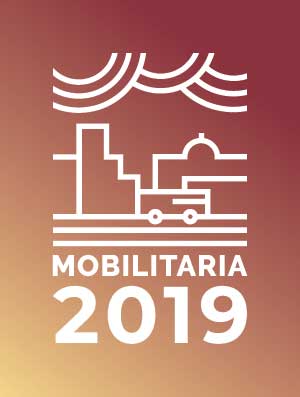
Presentations
Outline an overall picture of air quality trends and urban mobility policies in the main 14 Italian cities and metropolitan areas in the period 2017-2018. That's what it does "Mobility 2019“, The second report produced by the“ Sustainable Mobility ”working group of Kyoto Club and by the experts of CNR-IIA (National Research Council, Institute on Atmospheric Pollution) in collaboration with OPMUS, ISFORT's Observatory on Sustainable Urban Mobility Policies. The 14 cities and metropolitan areas taken into consideration: Bari, Bologna, Cagliari, Catania, Florence, Genoa, Messina, Milan, Naples, Palermo, Reggio Calabria, Rome, Turin, Venice.
The 2019 Report takes stock for the years 2017 and 2018, on the air quality trend in the 14 major cities by analyzing the data and trends of polluting emissions and the exceeding of limits. A framework of the Air Quality Remediation Plans of the Italian Regions is linked to these data. The analysis continues with an assessment of national policies in the field of mobility in the two years considered and the National Energy and Climate Plan presented by the Government.
But the real novelty contained in the 2019 report is the collaboration with OPMUS, the Observatory on sustainable urban mobility policies of ISFORT, which has developed a survey on mobility in the 14 metropolitan areas, which has reconstructed the trends in 2016/2017 with respect to data of 2012/2013. Unpublished data framing the complex issue of mobility in the 14 metropolitan areas.
Two specific contributions follow: one from T&E which deepens the European strategy for the decarbonisation of transport by 2030 and 2050, with the objectives of reducing greenhouse gases and to become fossil-free: a huge and necessary challenge that must see the cities as protagonists of the challenge. This is followed by a contribution from TRT Trasporti e Territorio, which carried out a simulation on electric mobility and its effects on four large metropolitan cities on the basis of a model.
The second part of the report is full of data on the urban mobility of each major city and the trends of the two-year period, with the inclusion of new data on mobility in metropolitan areas. The data are linked to a detailed survey of the mobility measures and the concrete actions carried out by the 14 municipal administrations in the two-year period. Tram networks, collective transport, Low Emission Zones, Sharing Mobility, metropolitan networks, bicycle mobility, electric vehicles, ITS, are the ingredients of the actions carried out by the cities, which struggle not a little to implement the measures. And the still problematic data on air quality confirm this.
Among the elements considered there is also the state of implementation of the SUMPs both at the metropolitan level and in each individual city. Naturally, the Report is completed by a set of proposals towards sustainable mobility and decarbonisation of transport, developed by the Kyoto Club and CNR IIA.
We recall that in the last edition, the study had always taken into consideration the air pollution and the mobility policies of the Italian metropolitan cities, in the decade 2006-2016.
“MobilitAria 2019” will be presented on Wednesday 17th April in Rome, from 9,30 at the national headquarters of Ferrovie dello Stato - Piazza della Croce Rossa, 1.
Participation in the event is free. To participate, please kindly send an email to James Pellini: g.pellini@kyotoclub.org.
Press review
"Air quality, Turin black jersey in Italy"- Ansa Environment Energy
"P10 passed: Turin first, Milan 2 / a " - Bend Lombardy
"Report “MobilitAria 2019"- Fs News.it
"Smog, Turin black jersey. Milan capital of green mobility'"-AdnKronos.it
"In Italy mobility on foot and by bicycle is growing, but also cars in circulation"- Greenreport.it
'Sustainable mobility in Italy, the results of the second report “MobilitAria"' - Qualenergia.it
"Smog in the city, Turin black jersey. Milan is the most sustainable city"- Repubblica.it
"Smog, Turin wins the 2018 black jersey"- La Stampa.it
"Milan is the second most polluted city in Italy"- Milan Today
Urban mobility and air quality: increase in the use of bicycles, but also the use of cars - Naples Solidarity City
"The air improves, the alarm remains"- L'Automobile.it
Energy plan and too shy climate, only Milan innovates - fortuneita.com
MobilitAria 2019: quality improves but far from sustainable transport - Transport Italia.com
MobilitAria 2019: mobility on foot and by bicycle is growing, but also the number of cars on the road - Ferpress.it
Kyoto Club, at what point is Greta's night - Let's get unbalanced.info
